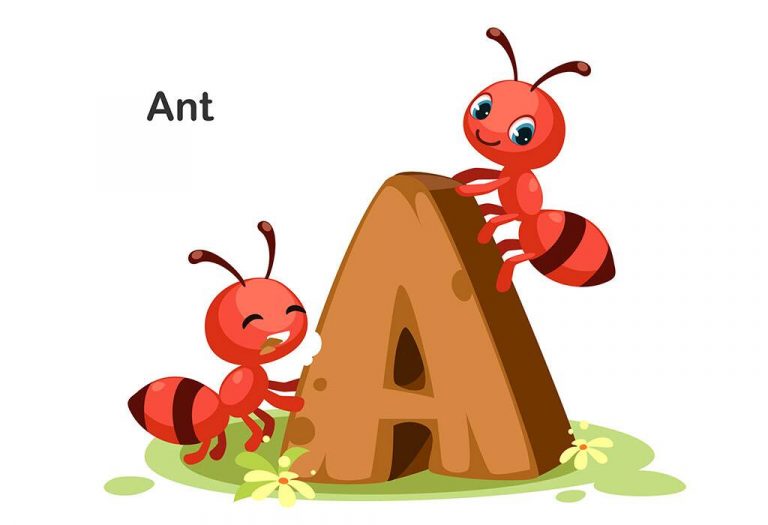“Homeschooling Vs Traditional Schooling”- Which Is Better?
The concept of homeschooling, though an age-old education practice, has recently gained popularity, mostly in countries like US, Australia, UK, Japan, Russia and many more, including India. Families who choose to go for home-based education are not dependent on public or tax-funded resources for their child’s education. Homeschooling calls for dedication, hard work and patience to raise home-schooled kids. In case you are wondering whether homeschooling is a better option than traditional schooling, you may want to read the advantages mentioned in this article.
Parents may choose to homeschool their children for several reasons. Whatever the reason may be, some of the major benefits of homeschooling over traditional schools have been discussed here. Read on to learn about homeschooling vs traditional schooling.
What Is Home Schooling?
Homeschooling, or home education, is a form of education where children are taught at home instead of attending a traditional school. Parents or guardians take on the role of educator, customizing the curriculum to fit the child’s learning style, interests, and pace. This approach offers flexibility in scheduling and teaching methods, allows for individualized attention, and can include a variety of learning resources and activities. Regulations for homeschooling vary by location, and parents often need to adhere to specific guidelines and assessments.
What Is Traditional Schooling?
Traditional schooling refers to the conventional system of education where children attend public or private schools that follow a standardized curriculum and schedule. In this setting, students are typically taught by professional educators in a classroom environment, with instruction based on state or national educational standards. Traditional schooling often involves a structured daily schedule, with students moving between different subjects and classes and participating in various extracurricular activities. It emphasizes a set curriculum, standardized testing, and social interaction with peers within a regulated and formal educational framework.
Advantages and Disadvantages of Homeschooling
Homeschooling has become an increasingly popular educational choice for families seeking more personalized learning experiences. While it offers flexibility and customised education, it also comes with its own set of challenges. Below are some key advantages and disadvantages of homeschooling.
Major Benefits of Homeschooling
Homeschooling offers several distinct advantages that make it a compelling choice for many families. By allowing for personalized education and a flexible learning environment, homeschooling can cater specifically to a child’s needs and preferences. Here are some of the major benefits of homeschooling:
1. Customisation of Curriculum
Homeschooling enables parents to tailor the curriculum to their child’s unique needs and interests, making learning more engaging and effective. This personalised approach allows for accelerated learning in areas of strength and additional support where needed.
2. Better Academic Accomplishments
Home-schooled children often show improved academic performance due to individualized attention and a curriculum that suits their learning style, leading to higher interest and better understanding of the material.
3. Stronger Student-Teacher Relationship
With homeschooling, students benefit from a closer relationship with their educator—usually a parent—which fosters a more supportive and open learning environment, helping to address any difficulties more effectively.
4. Inculcation of Better Family and Social Values
Parents have the opportunity to integrate family values and ethical teachings directly into their child’s education, providing a strong foundation in social and moral principles that might be overlooked in traditional school settings.
5. Providing a Safer Environment
Homeschooling protects children from external threats such as bullying and violence, creating a safer learning environment and reducing exposure to negative influences often present in traditional schools.
6. Other Benefits
Some of the other advantages of home-based education include – nurturing personal talent of the child, guiding him for better social interaction, helping him become mature through difficult situations, letting him enjoy educational vacations, giving the child adequate study breaks, whenever required, and most importantly, allowing him to enjoy the smaller joys of life through learning and intimacy.
Disadvantages of Homeschooling
While homeschooling offers many benefits, it also comes with certain drawbacks that can impact the overall educational experience. Understanding these disadvantages is crucial for families considering this educational approach. Here are some key challenges associated with homeschooling:
1. Limited Socialisation Opportunities
Homeschooled children may have fewer chances to interact with peers regularly, potentially affecting their social development. Parents need to actively seek out social activities and group interactions to ensure their child has ample opportunities for socialization.
2. Time and Financial Commitment
Homeschooling requires a significant time investment from parents, who must balance lesson planning, teaching, and managing the educational process. Additionally, it can place a financial strain on families due to the costs of educational materials and potential loss of income if one parent reduces their working hours.
3. Access to Resources
Homeschooling may limit access to specialized resources, extracurricular activities, and facilities available in traditional schools, such as science labs, sports teams, and art programs. Parents need to find alternative ways to provide these opportunities to ensure a well-rounded education for their children.
Advantages and Disadvantages of Traditional Schooling
Traditional schooling provides a structured and standardized approach to education, with students attending public or private schools. This system has several advantages but also comes with its own set of challenges. Here’s a look at the key benefits and drawbacks of traditional schooling:
Benefits of Traditional Schooling
Traditional schooling offers a well-established framework for education, providing students with numerous benefits that contribute to their academic and personal development. Here are some of the key benefits of traditional schooling:
1. Structured Learning Environment
Traditional schools provide a consistent and organized setting with a set curriculum and schedule, which helps students develop a routine and stay focused on their studies.
2. Socialisation Opportunities
Students interact daily with a diverse group of peers, enhancing their social skills, learning to collaborate, and gaining exposure to different viewpoints and cultures.
3. Access to Resources and Extracurricular Activities
Schools offer specialised facilities, such as science labs and sports fields, and a range of extracurricular programs, including music, arts, and sports, which enrich the educational experience and support various interests.
4. Qualified Educators
Professional teachers with specialized training and certifications deliver instruction, ensuring a high standard of education and providing expert support to address students’ academic needs.
5. Comprehensive Support Services
Traditional schools often provide access to additional support services, such as counseling, special education resources, and career guidance, which help address diverse student needs and promote overall well-being.
6. Preparation for Higher Education and Careers
The structured curriculum and standardized testing in traditional schools help prepare students for college and future careers, offering foundational skills and knowledge required for further academic and professional pursuits.
Disadvantages of Traditional Schooling
Traditional schooling, while offering many benefits, also has its drawbacks that can affect students’ educational experiences. Here are some of the key disadvantages of traditional schooling:
1. Limited Flexibility
Traditional schools often have a rigid curriculum and schedule, which may not accommodate individual learning styles or paces, potentially hindering personalized learning experiences.
2. Standardised Testing Pressure
The emphasis on standardized testing can lead to a focus on test preparation rather than deep learning, which may stress students and limit opportunities for creative and critical thinking.
3. Large Class Sizes
In many traditional schools, large class sizes can result in less individualized attention from teachers, making it challenging for some students to receive the support they need.
4. Potential for Bullying and Peer Pressure
Students in traditional schools may face bullying or peer pressure, which can negatively impact their emotional well-being and academic performance.
Homeschooling vs Traditional Schooling
Homeschooling and traditional schooling are two distinct approaches to education. Let’s delve into the key differences between homeschooling and traditional schooling.
| Homeschooling | Traditional Schooling | |
| Flexibility and Environment | Parents have control over the curriculum and pace. Can accommodate individual learning styles and needs. Allows for field trips and real-world experiences. | Follows a standardised curriculum. Provides a set schedule and routine. Offers access to specialised facilities and resources. |
| Socialisation | Opportunities for social interaction through homeschooling groups, co-ops, and extracurricular activities. May have fewer social interactions compared to traditional schools | Exposure to diverse peers and social settings. Opportunities for teamwork and collaboration. |
| Cost | Can be less expensive than traditional schooling, especially if parents use free or low-cost resources. It may involve costs for curriculum materials, field trips, and extracurricular activities. | Typically involves tuition fees, school supplies, and transportation costs. May offer financial aid or scholarship options. |
| Parental Involvement | Requires a high level of parental commitment, time, and effort. Provides parents with a close connection to their child’s education. | Involves parent-teacher communication and participation in school activities. May have less direct involvement in day-to-day instruction. |
FAQs
1. How does homeschooling impact a child’s college admissions?
Homeschooling can positively impact college admissions if done correctly. Many colleges and universities value the individualised approach and unique experiences that homeschooled students bring. However, it’s essential to maintain detailed records of the child’s education and ensure that they meet the college’s entrance requirements.
2. What measures do traditional schools take to address diverse learning styles?
While traditional schools often follow a standard curriculum, many are incorporating differentiated instruction techniques to address diverse learning styles. This may include offering different types of assessments, using various teaching methods, and providing additional support through tutoring and enrichment programs.
3. How can homeschooled students participate in sports and extracurricular activities?
Homeschooled students often have opportunities to participate in sports and extracurricular activities through local community programs, and clubs or by joining teams and groups organized by other homeschooling families. Some schools also allow homeschooled students to join their extracurricular activities.
This was all about homeschooling vs normal schooling. Both homeschooling and traditional schooling offer unique benefits and challenges. Homeschooling can be a viable alternative as long as parents ensure that home-schooled children receive a well-rounded education and necessary social interactions. Conversely, traditional schooling provides structured environments and resources that benefit many students. Ultimately, the choice between the two should be based on the child’s and family’s specific needs and preferences.
References/Resources:
1. Research Facts on Homeschooling; National Home Education Research Institute; https://www.nheri.org/research-facts-on-homeschooling/
2. A Fresh Look at Homeschooling in the U.S.; Institute of Education Sciences; https://nces.ed.gov/blogs/nces/post/a-fresh-look-at-homeschooling-in-the-u-s
3. Vasoya. N, Vansdadiya. R, Gondaliya. P; Comparing home schooling and private schooling: learning techniques and outcomes (International Journal of Early Childhood Special Education); ResearchGate; https://www.researchgate.net/publication/374116636_COMPARING_HOME_SCHOOLING_AND_PRIVATE_SCHOOLING_LEARNING_TECHNIQUES_AND_OUTCOMES; September 2023
Also Read:
Ways to Help Your Child Succeed in School
Tips for Choosing a Good School for Your Child
Year-Round School – Pros And Cons for Kids
Pros and Cons of Getting Education at Boarding School
Waldorf Schooling – Everything that Parents Need to Know
Was This Article Helpful?
Parenting is a huge responsibility, for you as a caregiver, but also for us as a parenting content platform. We understand that and take our responsibility of creating credible content seriously. FirstCry Parenting articles are written and published only after extensive research using factually sound references to deliver quality content that is accurate, validated by experts, and completely reliable. To understand how we go about creating content that is credible, read our editorial policy here.























